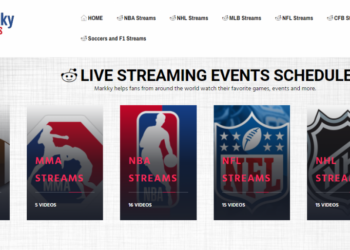Technology has become so integrated into modern society that many people don’t even notice it. They expect tech to be there to help streamline what they need to accomplish in their personal and professional lives. It’s not until modern conveniences hit a snafu that everyone realizes what life was like without them.
The benefits technology can bring, however, extend beyond everyday conveniences. For small business owners, software and hardware solutions elevate the way they operate. From outpacing the competition to achieving cost efficiencies, tech tools accelerate business growth. Below are a few ways technology can help any small company meet its goals.
1. Keep Your Network and Connected Devices Secure
The level of security that comes with home Wi-Fi setups won’t always cut it for small businesses. But you don’t always need the full range of complex tools an enterprise solution provides, either. Powered by AI, a small business Wi-Fi solution protects your network and devices with security options that fit just right.
This type of solution is more than a collection of Wi-Fi access points and gateways. It includes security software that keeps tabs on the network whether you’re working or spending time away from your business. Built-in artificial intelligence not only blocks cybersecurity threats and malicious content, but also lets you view and manage them.
Maybe you want to restrict employee access to a particular social media site, but not all of them. You might have also recently connected a new device the software doesn’t recognize. Remote management tools make it possible to set up separate zones within your location. You can designate different online access levels for customer, employee, and office gadgets. The software also scans and monitors devices for suspicious activity and helps shut down unauthorized intrusions before they occur.
It isn’t enough to deploy anti-malware software since cybercriminals are continually launching more online attacks at small and medium businesses. Robust monitoring software built into your Wi-Fi network can become an instrumental part of any cybersecurity plan. It may save your business from the costs associated with the aftermath of a data breach.
2. Provide Enhanced Customer Support
Gone are the days where customers expect to wait until “normal business hours” to get the answers they need. Today’s world doesn’t seem to sleep, given varying work schedules and multiple demands that may include a family and school. Plus, online storefronts make it possible for any business to reach clients around the globe. A good portion of your loyal clients may be in the same time zone. However, some customers could be 15 hours ahead of you.
Regardless of what day or time it is in your neck of the woods, online tools help deliver customer support. Learning or support centers on your company’s website, how-to videos, and chatbots are some examples. Although it’s a standard practice to have online FAQs, these may not be sufficient for some customers.
Consider making product-oriented videos that guide clients through setup and troubleshooting processes. Chatbots also provide an interactive way for clients to open trouble tickets and get answers about invoices and delivery issues. While most up-to-date website designs are mobile-friendly, small businesses might also consider developing mobile support apps.
Some customers prefer the convenience of accessing their account profiles and support options from mobile devices. Apps eliminate the need to sign in to a web portal and often work with smartphone capabilities. These include scanning relevant documents or capturing images. For clients who need help when they’re on the go, apps are easier to navigate from devices with smaller screens.
3. Streamline Marketing Efforts
Small businesses face challenges with finding ways to stand out in competitive marketplaces. With fewer resources, marketing budgets are usually smaller, and internal staff may not have the time to wear multiple hats. Managing lead generation, events, advertising, and online content can quickly become overwhelming.
Fortunately, customer relationship management solutions help business owners bring all their marketing efforts under a single umbrella. With cloud-based software, small businesses can build landing pages, lead generation forms, and maintain separate lists of contacts. For instance, you could create lists of prospects for the different products or services you offer. Once leads become conversions, the CRM solution will automatically tag them as existing customers.
Based on various tags, it’s easy to curate lists within minutes. Use those lists to send out targeted emails within the same CRM platform. These emails can be survey invitations, event notices, promotional messages, or content that’s part of a welcome series.
CRM solutions also let you integrate the online videos you’ve created. These videos may be commercial spots, behind-the-scenes content, employee spotlights, or product demonstrations. With templates, it’s easy to embed video links and previews into emails and website pages. Your landing pages and email communications will have a professional and dynamic look while making your content more interactive.
4. Manage Your Business From Anywhere
Your small business may not be 100% online, but that doesn’t mean you’re in the office or the store every day. There are times when you or your employees must work remotely. Staff might need to work from hotel rooms or venues if your company has scattered locations and events.
Cloud-based communication and project management apps make it possible for employees to keep connected to the home office. They can log in from anywhere with an internet or cellular data connection to attend meetings or keep projects moving. Inclement weather and canceled flights no longer prevent progress. You can still meet your deadlines, check in with key staff members, or get the ball rolling on new initiatives.
Other remote software solutions like virtual private networks (VPNs) help you access documents and applications from your business’s network. These include files you store in a network drive or critical legacy software. Remote solutions can also let you access and control specific devices. You can make necessary configuration changes on a back-office computer or guide a new employee through payment processing software. Physical presence is no longer a requirement.
Conclusion
Technology has opened up many new possibilities for small business owners. With the range of available tools and capabilities, any company can compete globally and streamline operations. But the benefits of tech don’t stop there, as many smaller organizations now offer more convenient customer and staff experiences. And it’s these experiences that put small business development on the fast track.






